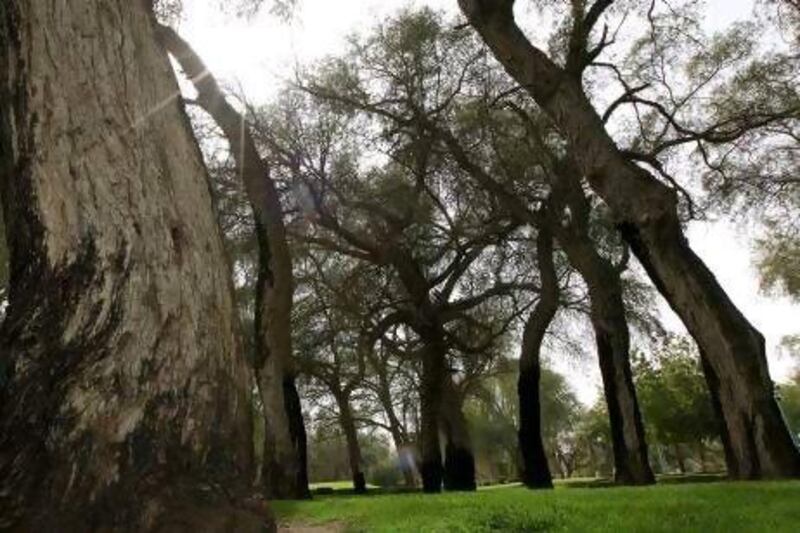ABU DHABI // Using native plants in city landscaping could save Al Ain more than 96 per cent of its irrigation costs, a pilot project has found.
Local plants such as date palms and ghaf trees are well adapted to the dry and salty desert environment, and planting them in parks and along roads could strengthen the country's water security, the Minister of Environment and Water said yesterday.
"We hope that using the native plants will really cut down on our consumption," Rashid Ahmed bin Fahad said.
Mr bin Fahad spoke on the sidelines of a forum organised by the ministry and the country's municipalities to discuss indigenous plants, and those that originated elsewhere but now grow naturally here.
Officials at the forum called for a national centre devoted to documenting, preserving and cultivating such plants.
"We are studying it with other government institutions," Mr bin Fahad said. "This is needed."
Integrating native plants into municipal landscaping helps to conserve scarce resources, said Helal Al Kaabi, from Al Ain City Municipality.
"The lack of rain, the lack of groundwater resources, the lack of rivers and wadis - all these challenges have to be faced by the Government," Mr Al Kaabi said. "We have to deal with such a situation very seriously."
Al Ain uses drain water for about half of its landscaping irrigation and has developed a strategy to reduce the expense of the process.
"We have 81 species of plants …" Mr Al Kaabi said. "They support the dryness of the weather and they resist all the tough circumstances of the desert environment we have in this area. I think they can be more properly utilised."
Al Ain designed a 1,200 square metre project and selected several native species to plant. The operational cost of maintaining them was 60 fils for each square metre a month.
"They need very small quantities of water both in winter and summer," Mr Al Kaabi said.
Abu Dhabi Municipality also plans to reduce costs by using native and naturalised plants, said Abdul-Sattar Al Mashhadani, the head of the parks and recreation division.
"The plantation of native plants is still not enough," Mr Al Mashhadani said. "It's why we need to gradually change our designs."
Since 2010, about 35 per cent of the capital's ornamental landscaping has used native plants.
Apart from saving water, the strategy provides natural shelter and food for wildlife such as birds, Mr Al Mashhadani said.
"In addition to retaining our unique horticultural identity, it will strengthen capacities for drought and climate change impact management," he added.
A challenge will be "obtaining the acceptance and adoption" of the policy change, Mr Al Mashhadani said.
Officials from Dubai, Ajman and Ras Al Khaimah municipalities also spoke at the forum.
"We have always been interested in native plants," said Nabil Mahfoudh, from Dubai.
The municipality transplants ghaf trees from areas where construction is planned, Mr Mahfoudh said.
"Some of those trees are really big and live for a long time, so it was a shame to lose them," he said. "We took them to Al Mushrif Park."
Mr Mafoudh said between 80 and 90 per cent of transplants were successful.
In 2010, Ajman Municipality launched a six-year strategy to integrate native plants into landscaping.
Ahmed Al Muhairi, its manager of administration for agriculture and public parks, displayed a photograph of a street where a native bush had been trimmed into decorative shapes.
Ajman has also experimented with moving ghaf trees.
"About 75 per cent of those transfers are successful," Mr Al Muhairi said.






